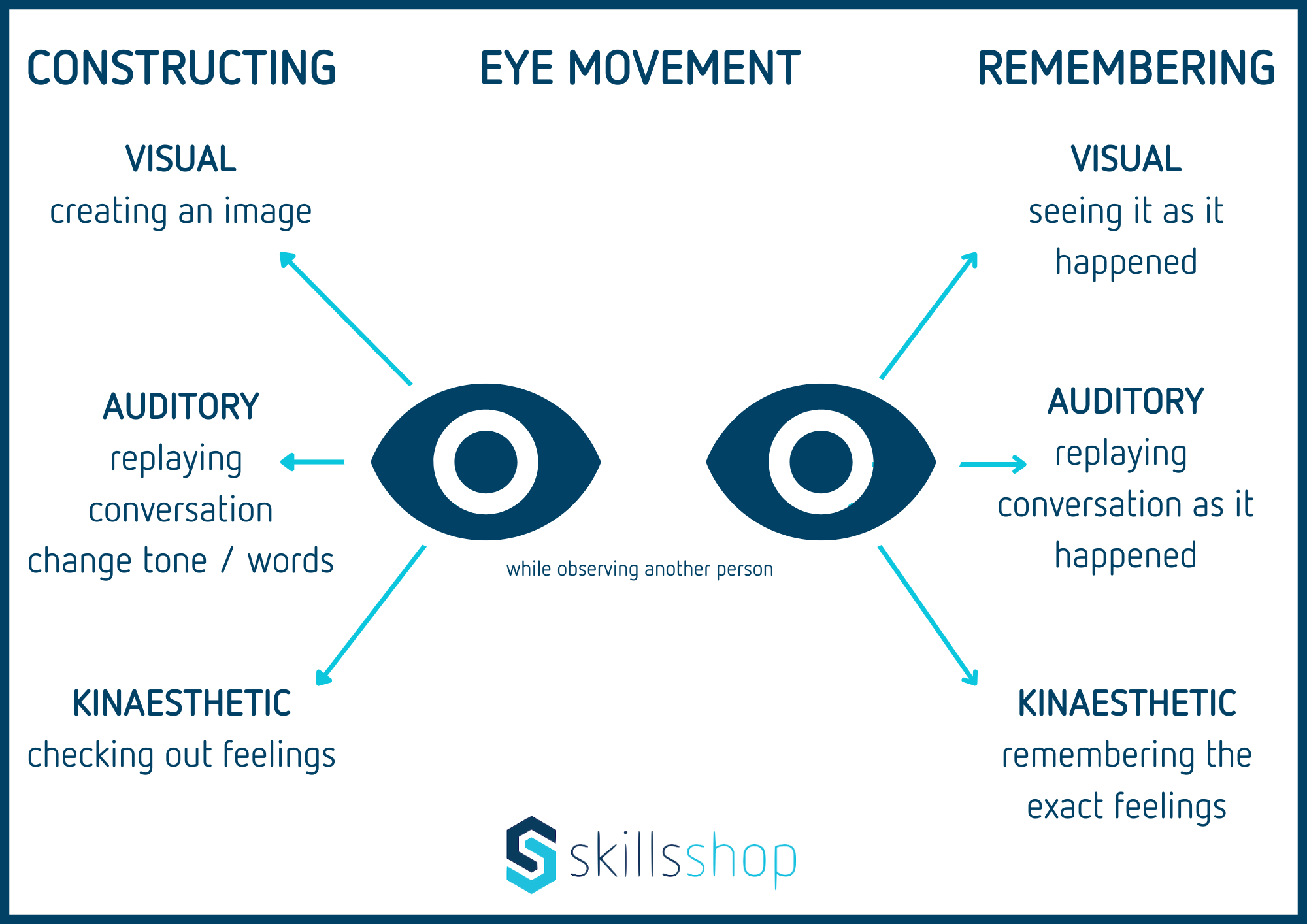VAK Analysis
What is VAK Analysis?
VAK analysis is a framework that categorises the ways people process information and respond to stimuli into three primary styles:
- Visual (V): Preferring to see and observe, relying on images, body language, and visual aids.
- Auditory (A): Preferring to hear and process spoken words, tone of voice, and sounds.
- Kinesthetic (K): Preferring to feel and do, responding to touch, physical gestures, and emotional connections.
Understanding an individual’s preferred learning or communication style can significantly enhance de-escalation techniques by tailoring your approach to their needs, helping to reduce stress and anxiety during challenging situations.
The Role of VAK Analysis in De-escalation
When someone is distressed, their ability to process information and make decisions can become impaired. By using VAK analysis, you can adapt your communication style to align with the individual’s natural preferences, making your de-escalation efforts more effective.
Benefits of Using VAK in De-escalation
- Builds rapport and trust quickly reduces misunderstandings and frustrations.
- Encourages cooperation and calms heightened emotions.
- Helps individuals feel seen, heard, and understood.
Strategies for Each VAK Style
1. Visual
Visual individuals respond well to what they can see. They may find comfort in observing calm, confident behaviour and clear visual cues.
De-escalation Strategies:
- Maintain open and relaxed body language to demonstrate calmness.
- Use hand gestures or visual aids to explain what will happen next.
- Maintain appropriate eye contact to show attentiveness and empathy.
- Create a calming environment by removing visual clutter or distractions.
What to Avoid:
- Aggressive or erratic body movements.
- Overwhelming visuals, such as flashing lights or crowded spaces.
2. Auditory
Auditory individuals rely on tone of voice, clear instructions, and verbal reassurance to feel at ease.
De-escalation Strategies:
- Speak slowly, clearly, and in a calm tone.
- Use reassuring and empathetic language, such as “I’m here to help.”
- Repeat important points if needed to ensure understanding.
- Use verbal cues to guide behaviour, such as “Let’s take a deep breath together.”
What to Avoid:
- Speaking too quickly or using a harsh tone.
- Raising your voice or talking over the individual.
3. Kinesthetic
Kinesthetic individuals respond to touch, movement, and emotional connection. They may rely on physical reassurance and grounded experiences to feel safe.
De-escalation Strategies:
- If appropriate and with consent, offer physical reassurance, such as a light touch on the shoulder.
- Encourage grounding techniques, such as walking together or sitting in a comfortable space.
- Use empathetic language that acknowledges emotions, e.g., “I can see you’re feeling upset. Let’s work through this together.”
- Provide tactile objects like stress balls or fidget toys to help them channel their energy.
What to Avoid:
- Forcing physical interaction without consent.
- Ignoring emotional cues or failing to acknowledge their feelings.
Using VAK in Real-Time De-escalation
1. Observe and Assess
Pay attention to the individual’s behaviour to determine their likely VAK preference. For example:
- Are they focused on the environment (Visual)?
– Are they seeking verbal interaction (Auditory)? - Are they restless or seeking physical contact (Kinesthetic)?

2. Adapt Your Approach
Tailor your de-escalation techniques based on their VAK preference.
3. Combine Techniques
Use a combination of visual, auditory, and kinesthetic approaches when the preference is unclear or when dealing with groups.
4. Evaluate and Adjust
Continuously assess the individual’s responses and adjust your approach if necessary.
Practical Application Example
Scenario:
A student becomes upset during class, loudly expressing frustration and throwing objects.
- Visual Approach: Move to their eye level, maintain calm body language, and point to a visual chart showing steps to regain control (e.g., “Take a breath, then talk”).
- Auditory Approach: Speak calmly, saying, “I understand you’re upset. Let’s talk through what’s bothering you.” Use a reassuring tone.
- Kinesthetic Approach: Invite them to walk with you to a quieter space and provide a stress ball for them to hold.
By combining these strategies, you can address their immediate needs while preventing escalation.
Training Staff in VAK Analysis
To effectively use VAK analysis in de-escalation, staff should:
- Understand the VAK Model: Train in recognising and responding to different communication styles.
- Practice Active Observation: Learn to quickly identify an individual’s VAK preference through behaviour and verbal cues.
- Role-Play Scenarios: Simulate de-escalation situations to practise adapting communication styles in real-time.
- Maintain Flexibility: Emphasise the importance of adjusting approaches based on individual needs and the context.
Conclusion
Incorporating VAK analysis into de-escalation techniques provides a personalised approach to managing challenging behaviours. By understanding and responding to an individual’s preferred communication style, you can create a supportive environment that fosters trust, reduces anxiety, and prevents escalation.
Investing in VAK training empowers staff to handle stressful situations with confidence and compassion, ensuring the well-being of everyone involved.
Version: Version: 1.04
